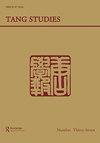What's in a Surname? Central Asian Participation in the Culture of Naming of Medieval China
IF 0.5
0 ASIAN STUDIES
引用次数: 2
Abstract
Medieval China, and particularly the Tang dynasty, witnessed unprecedented cultural interactions among Chinese and non-Chinese peoples. One well-researched aspect of these interactions is the changing practice of naming. By reading documents in Central Asian languages, in particular Khotanese, in conjunction with transmitted Chinese records, this article highlights the distinctive Central Asian tradition in the use of Chinese surname. I argue that, unlike the better-studied North Asian tradition, in which surnames were derived from usually multisyllabic tribal names, surnames for Central Asian peoples were largely invented and not traceable in Central Asian languages. In particular, these surnames were usually monosyllabic and hence formally much closer to typical Chinese surnames. The Central Asian participation in the practice of surnaming did not introduce a large number of new surnames, but it did profoundly influence what a surname could mean in medieval China.姓氏意味着什么?中亚人对中世纪中国命名文化的参与
中世纪的中国,特别是唐朝,是中国人与外国人文化交流空前的时期。这些相互作用的一个被充分研究的方面是命名的变化。本文通过阅读中亚语言,特别是于阗语的文献,结合传世的中国记录,突出了中亚使用中国姓氏的独特传统。我认为,与研究得更好的北亚传统不同,在北亚传统中,姓氏通常来自多音节的部落名称,中亚民族的姓氏在很大程度上是发明的,在中亚语言中无法追溯到。特别是,这些姓氏通常是单音节的,因此在形式上更接近典型的中国姓氏。中亚人对姓氏的参与并没有带来大量的新姓氏,但它确实深刻地影响了姓氏在中世纪中国的含义。
本文章由计算机程序翻译,如有差异,请以英文原文为准。
求助全文
约1分钟内获得全文
求助全文

 求助内容:
求助内容: 应助结果提醒方式:
应助结果提醒方式:


